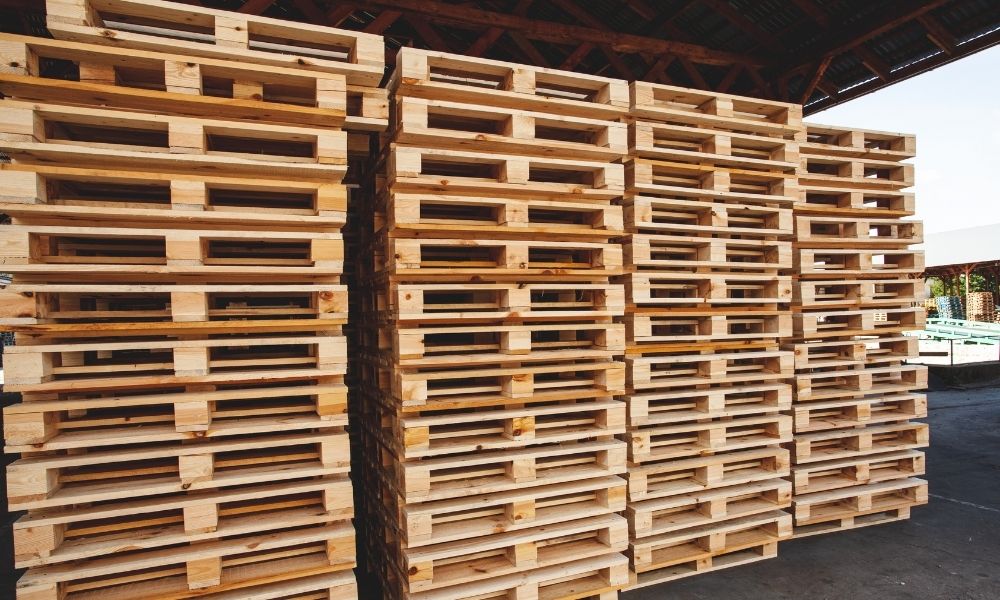- By First Alliance Logistics Management
- May 7, 2021
- Buying Pallets
Wooden pallets were one of the earliest models of material transportation, so it’s no surprise that the demand for them has drastically changed with time. Today’s pallet demand is dependent on multiple evolving trends, environmental elements, and industry developments. In this blog, we’ll discuss the factors that play into the continually evolving pallet industry and review how the demand for pallets has changed.
Environmental Trends
Businesses and manufacturers crave circular business models that allow ample opportunity for reusable resources. As a result, they’ve heavily embraced sustainability as a pallet production trend. This emphasis on eco-friendly manufacturing has only strengthened and increased the demand for wooden pallets in the industry. Wooden pallets are durable and long-lasting to extend the longevity of their use.
Pallet recycling services that allow for the selling and buying of used pallets also encourage manufacturers to avoid unnecessary waste by recycling rather than purchasing virgin materials. The drive for higher sustainability and lower total waste from manufacturers has dramatically impacted the wooden pallet industry by increasing this demand over time.
Material Trends
Wooden pallets are the most common type in the industry. This fact makes them universally popular with most manufacturers. However, the growing interest in plastic-based materials has affected the overall demand for pallets as well.
Plastic pallets are one of the fastest-growing pallet types on the market. Since manufacturers can recycle them or melt and reform them into other manufacturing supplies, this option is popular among businesses looking to reduce waste. Plastic pallets have also risen in demand and popularity because they can store products without the risk of pests or wood-eating insects ruining their quality.
However, plastic pallets are also highly sensitive to drastic changes in temperature and weather, making them less effective during transportation. The cost of plastic pallets is also considerably higher compared to the cost of wooden and recycled pallets. Businesses ultimately alternate between calculating projected costs using rental, recycled, or whitewood materials to determine the best material for their pallets. However, these changes in material trends factor significantly into the overall fluctuating demand of pallet use in the industry.
International Shipping Trends
The demand for pallets also depends on international pallet orders overseas. While a great deal of merchandise comes from overseas, these orders are not palletized on standard shipping pallets. Instead, manufacturers optimize space in ocean containers by floor loading product and eliminating space dedicated to pallets. Once these containers are unloaded, pallets are necessary on the unloading dock to palletize merchandise for distribution. Increases in these non-palletized shipments often occur during seasonal trends, such as high holiday spending months. As American consumers continue to flock to online shopping, the demand for goods manufactured overseas will only stand to increase over time.
Price Trends
Another factor that has affected how the demand for pallets has changed is the steady increase in pallet price. One of the most significant reasons the price of pallets has risen is the increasing demand for lumber.
Changing weather conditions have made lumber logging more difficult, which has consequently driven up pallet prices. Regions that naturally harvest lumber have experienced greater snowfall and longer winters than in previous years.
These weather conditions leave lumber damp rather than frozen, making harvesting much more time-consuming and strenuous. This extreme weather also prevents loggers from meeting delivery deadlines and lessens the total amount of lumber they can collect at the end of each season.
Industries that create heavy competition for limited lumber resources, such as construction, also increase the overall price of lumber needed to make pallets.
The result of all these conditions is a steep increase in price due to a lack of lumber resources. Cost per pallet continues to rise, which, again, directly affects the demand for pallets. While increasing pallet prices may decrease the need for pallets, the industry’s concentrations toward reusable pallet production have considerably stabilized this supply and demand relationship.
Technology Trends
Rapid advancements in technology have also affected the demand for pallets. New technology has introduced more efficient tools to measure pallet sizes and optimize storage. Advancements in technology have also reinvented many aspects of material handling in warehouses. For example, while past warehouse facilities would employ workers to operate forklifts, many now use automated systems. Automation has changed how efficient facilities are and made pallet material handling more convenient and effective.
Technology has also created more consistent and reliable delivery methods, such as GPS systems. These systems reduce the number of pallets lost or delayed in transportation, making deliveries faster and more convenient for businesses.
Product digitization has also opened new lines of communication between companies and warehouses. Warehouses can now unload pallet information to help businesses track and follow the progress of their product deliveries.
These developments have evolved the pallet industry to be more effective and efficient, which has encouraged businesses to invest in larger orders of pallets for their product storage and transportation. Although technology may not seem like a direct influence on the demand for pallets, it has significantly optimized their use in the industry.
The demand for pallets has certainly changed since its early origins. Fluctuations in environmental trends, materials trends, international trends, price trends, and technology trends have all drastically contributed to the changing demand of pallets over time. These different trends of influence change often, which makes predicting the pallet market demand challenging to manage.
Here at First Alliance Logistics Management, we offer pallet sourcing to help companies reduce waste and cut unnecessary costs. Our teams of experts are well-versed in pallet market trends and can help businesses plan their pallet management. Our dedicated staff will help your company navigate your pallets and offer services to organize a management strategy. Browse our website for more information on how we can meet your pallet sourcing needs.



